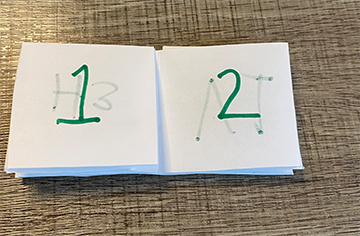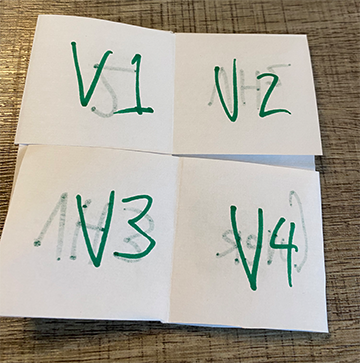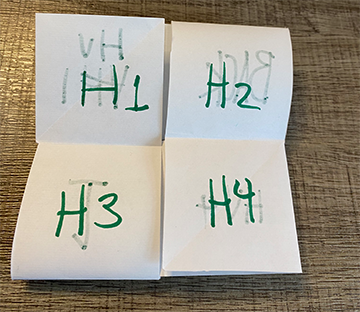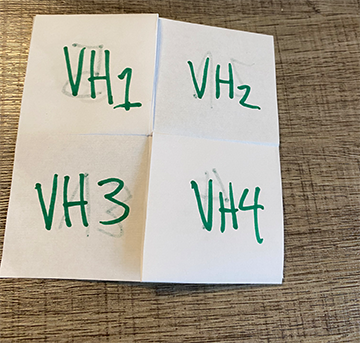This week in the Black Unicorn Press Laboratory we are busy at work developing a new type of hyper textual zine structure called the tetraflexazine, and while we are still in experimental prototyping stages with our new design, we found it entirely too fun not to share with the world.
The idea behind the tetraflexazine begins with the geometrical shape: the tetraflexagon, which can be made with a single piece of paper and a pair of scissors. Mathmagicians have been playing with these shapes for years, and artists have as well, but we at the Black Unicorn Press are especially interested in how this geometric design can be used to structure story telling and idea sharing.
And thus rises the Tetraflexazine! Let’s walk through one potential option for its structure and what it allows.
NOTE: This example was made with a single sheet of 8.5”x11” printing paper. It is low quality, thin paper and thus bleed through is definitely an issue as the pages of a tetraflexazine occupy both sides of the piece of paper. Once a story suitable for the new shape has been developed, we will be exploring the use of heavier weight paper until we get the right mix of flexibility for folding and thickness to prevent muddled images. This blog post is just about exploring the structure itself.
We at the Black Unicorn Press are fans of the booklet/zine, so we wanted ours to fold down into a structure that cold have a front and back cover and appear as zine like as possible.

The tetraflexazine then opens traditionally onto a page 1 and 2, or a potential inside front cover and inside back cover.

The tetraflexazine then folds up into its true tetraflexagon structure presenting another 4 pages that could either be pages 3 through 6 (as represented in the picture) or 1 through 4 if you want to have an inside cover and front matter. From here things get exciting!

The reader now has the option to either fold the tetraflexazine vertically or horizontally to reveal a new spread of 4 pages. Each of these 4 pages is unique and can thus either be pages 7 through 10 and 11 through 14, or more interestingly, be pages 7a through 10a,
and 7b through 10b (In our images we have labeled these as Vertical V1 through V4, and Horizontal: H1 through H4).


Fold the tetraflexazine again along the other axis, and you will get a following 4 page spread, making for pages 11a through 14a and 11b through 14b, or 22 pages total (We have labeled these pages as VH1 through VH 4 and HV1 through HV4, as that corresponds to how you get to these pages).


There is obvious potential here for choose your own adventure comics and narrative zines, but we at the BUP also think there is an interesting rhetorical opportunity here as well to explore two different sides of an argument or philosophical idea. Again, we have just been playing around with the mechanics of the form and are very excited to see what people can do with this structure once they have the opportunity to wrap their heads around how it works.
We will even be working on figuring out how to make a digital tetraflexazine to share here on our website once we get a couple of of examples to share that are not just structural models.
If these ideas are interesting to you, feel free to experiment with them on your own and feel free to share your examples with us by email, or on social media with the hashtags #Tetraflexazine , or #BlackUnicornPress. We look forward to seeing what new stories and ideas this structure can be used to express!